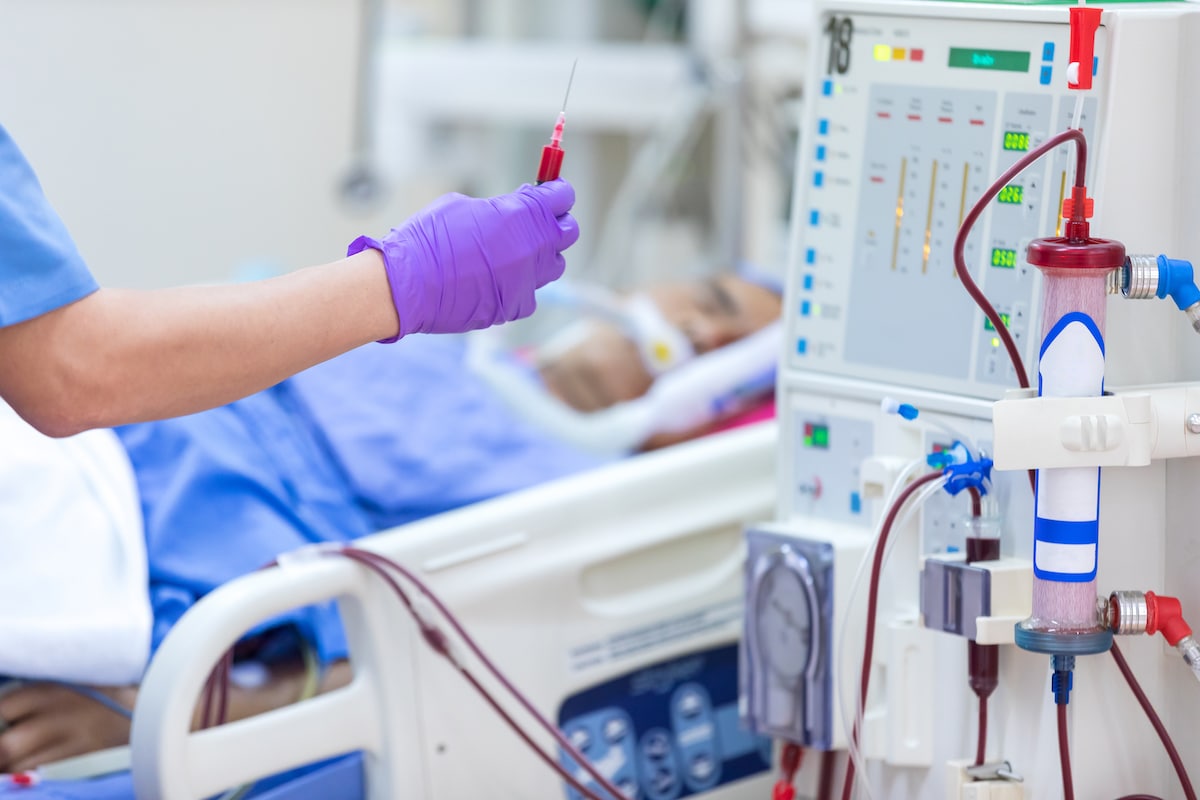Hemodialysis Unit
Hemodialysis Center, Thainakarin Hospital provides hemodialysis service for patients with acute and end-stage renal failure.
Hemodialysis Unit, 4th Floor

Service/Diagnosis/Treatment
Patients will be closely monitored by experienced nephrologists and nurses according to the standards of the Association of Thai Interventional Neuroradiology. The center has private rooms and shared rooms with friendly environment. We offer services to the general public and patients holding social security benefits. Patients who have social security benefits can reimburse the hemodialysis from social security fund.

Medical Technology / Equipment / Specialized Examination Rooms
- On-line Hemodiafiltration
- Hemodialysis
Diseases and Symptoms
- Patients with end-stage renal failure and acute renal failure.
Instructions for patients and relatives for maintenance of permanent vascular access
What is the vascular access?
Vascular access for hemodialysis is the surgically created path through which blood is removed from the body to the filter and cleaned blood is returned into the patient’s body.
Maintenance of central venous access catheter or plastic access for hemodialysis
- Maintain cleanliness, do not touch the wound or remove dressing.
- Keep the access site dry.
- If the wound peels off or gets wet, visit the hospital to treat the wound.
- Do not use the arm attached with the vascular access to lift heavy things and avoid using sharp objects.
- Do not wear o-neck t-shirts to prevent vascular access from being stuck.
- Meet the physician in case of abnormalities e.g. the removal of vascular access, cold, shivering, pain, edema, or bleeding from the wound.
Patients with Permanent Catheter
- Arteriovenous fistula by using the patient’s coronary artery is the best method as hemodialysis can be performed with few complications and it has a longer useful life. However, we have to wait until the coronary artery is complete prior to operation (2-3 months).
- Arteriovenous graft will be performed if the patient’s coronary artery is too small. Arteriovenous graft will be inserted under the skin and can be used within 2-4 weeks. If it is well-maintained, its useful life will be prolonged for many years.
Self-care for patients receiving permanent catheter
Post-surgery period
- During the first 3 days, patients should raise their arm on which the surgery was performed at heart level to prevent and relieve edema.
- If no pain or serious bleeding, patients can start exercising the vascular access 3 days after the surgery by fully squeezing a rubber ball (count 1 – 10) then release it. Do this several times a day, 10 – 15 minutes each round.
- Do not let the wound get wet for 7 – 14 days or until stitches are off.
- Avoid touching or hitting at the surgical parts.
- Do not take blood pressure, draw blood or give blood or IV fluids on the arm with the vascular access.
- Do not use the arm with the vascular access to lift heavy objects and avoid using sharp objects.
- The patients who are prescribed antibiotics after the surgery should take all medicines as prescribed to prevent drug resistance.
- Do not touch dirty things which may cause infection. Wash hands with soap after using toilet.
During operation
- Do not wear a wrist watch or bracelet. Do not wear any shirt that ties the arm receiving the hemodialysis. Do not lean your head on the arm on which the hemodialysis is performed. Do not lift heavy objects.
- Clean the arm on which the hemodialysis is done with soap and water then wipe with a clean dry cloth before the procedure.
- Examine by touching (vibration) and hearing (sound) at the vascular access area at least once a day. If there is no vibration or less vibration, consult the physician immediately.
- Do not rub the skin near the vascular access.
- Exercise the vascular access by fully squeezing a rubber ball (count 1 – 10) and release it. Do this several times a day, 10 – 15 minutes each round (Do not do it within the first 24 hours after operation).
- Do not take blood pressure, draw blood or give blood or IV fluids on the arm with the vascular access.
- Avoid touching sharp objects. Avoid staying near extreme hot and cold temperature.
- Observe for numbness or darkening at the tip of your hands and feet. Inform the nurse if such symptom is present.



